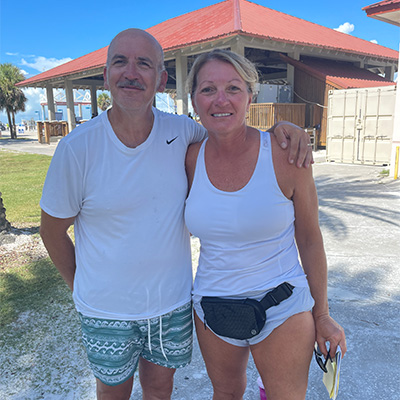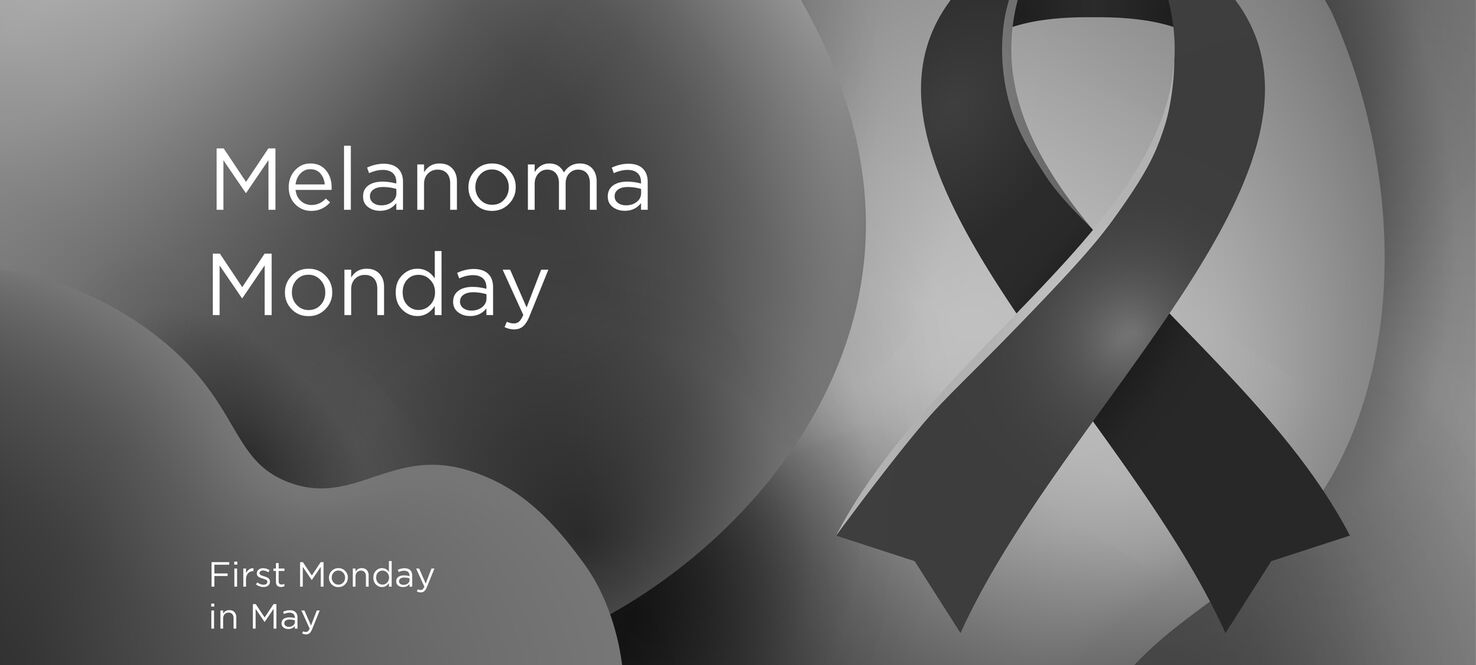This Melanoma Monday, Pay Attention to your Skin
When Sergio Iacoe stopped by for a free skin cancer screening last July on Clearwater Beach, he was surprised to learn a spot on his back was likely melanoma.

Screeners found melanoma on Sergio Iacoe's back during a Mole Patrol screening at Pier 60 in Clearwater last July.
"It sparked some concern,” Iacoe said following his screening by Moffitt Cancer Center’s Mole Patrol at Pier 60. “I’m happy they located it and gave us some great advice on what to do when we return home to Canada.”
Melanoma is the most dangerous of skin cancers and develops when melanocytes, cells that produce pigment in the skin, grow out of control. It is highly curable if caught early.
Monday, May 6, marks Melanoma Monday. It is a day dedicated to raising awareness of this specific type of skin cancer and encourages people to pay attention to their skin and ask a dermatologist about areas of concern.
“Early detection is the best way to maximize your chance of cure from any form of skin cancer,” said Vernon Sondak, MD, chair of the Cutaneous Oncology Program at Moffitt. “Be smart in the sun and pay attention to your skin. If you have a mole that is changing, a sore that isn’t healing or a new lump or bump on or right under your skin, get it checked out right away.”

And that advice applies to everyone, regardless of their ethnicity, skin tone or age. In a study published last year in the Journal of the American Association of Dermatology, researchers found that while melanoma is much more common in white individuals, Black men with melanoma are 26% more likely to die from it than their lighter-skinned counterparts. Melanoma remains quite rare in children and adolescents, but often presents in an unusual fashion and often at a more advanced stage than adults.
Sondak says that less heavily pigmented areas on dark-skinned people are at the most risk of melanoma and other skin cancers.
“We see melanoma arising in those lighter-pigmented areas rather than in other parts of the skin,” he said. “We don’t see many regular skin cancers in African Americans, but we do see it concentrated mostly on the hands and feet. Skin cancer is relatively rare in Black individuals overall so it doesn’t get the attention it should.”
According to the American Cancer Society, melanoma accounts for only 1% of skin cancers but causes a large majority of skin cancer deaths. The organization estimates 100,640 new melanomas will be diagnosed in the United States in 2024, with a slight majority of those being found in men. Nearly 8,300 people in the U.S. will die from melanoma this year.
Fortunately, melanoma death rates have declined since 2013, thanks to advances in treatment.
It can also be avoided, if you plan ahead, Sondak said.
“Sun protection starts with proper clothing – long sleeves and broad-brimmed hats (sorry, a baseball cap is not enough) – along with sunglasses and sunblock on any exposed skin.”
The sun’s rays are most direct and intense between 10 a.m. and 2 p.m., so concentrating activities early or late in the day can reduce exposure and decrease the chance of sunburn and long-term of skin cancer.
Wearing sunscreen is the first line of defense for sun protection. Sondak and the American Academy of Dermatology both recommend choosing a broad-spectrum sunscreen that protects against ultraviolet A (UVA) and ultraviolet B (UVB) rays, both of which can cause cancer.
Be sure to select a sunscreen with an SPF of 30 or more. While sunscreens can be water resistant, they are not waterproof. Apply sunscreen 15 minutes before you’re exposed to the sun and reapply every two to three hours after swimming or excessive sweating. Remember, UV exposure can increase your skin cancer risk even without causing a sunburn.



